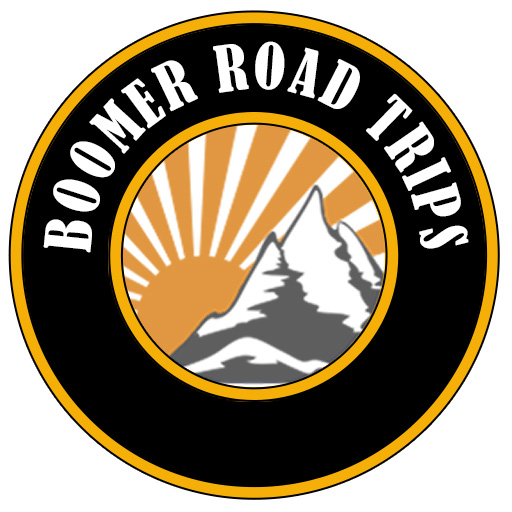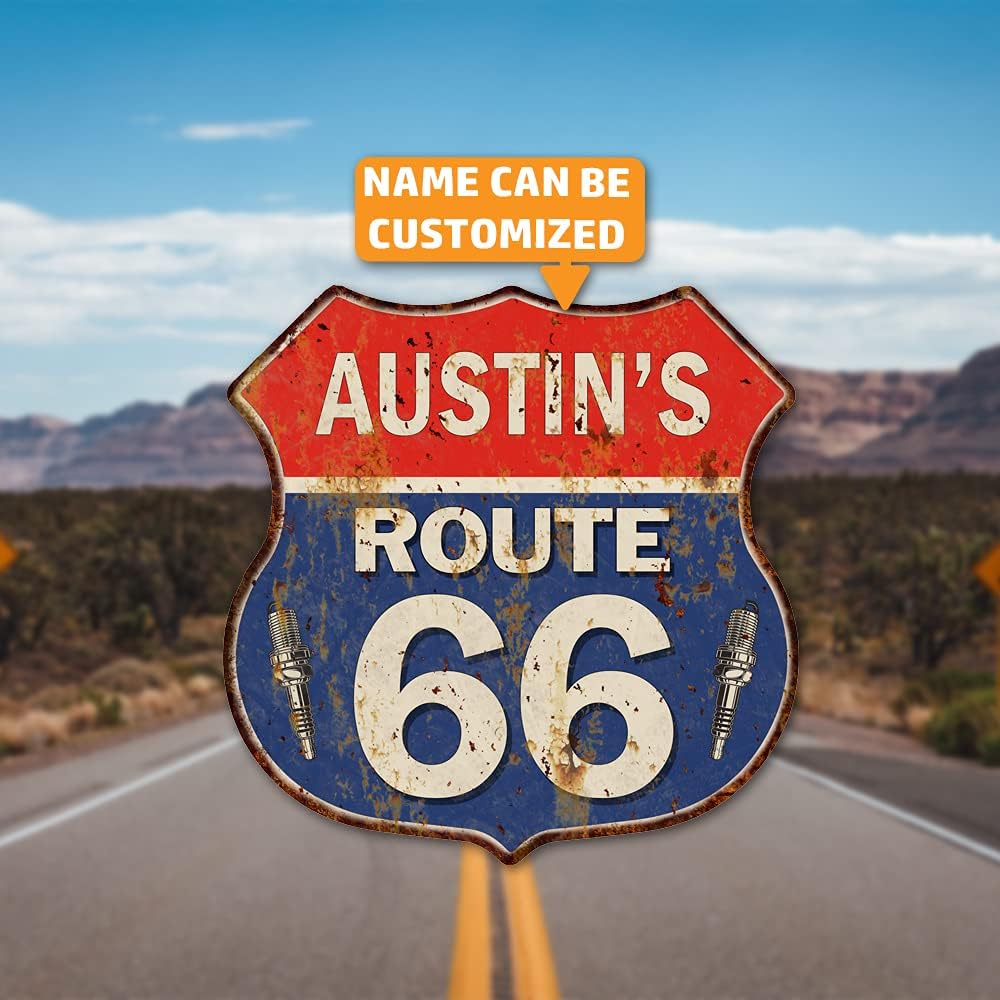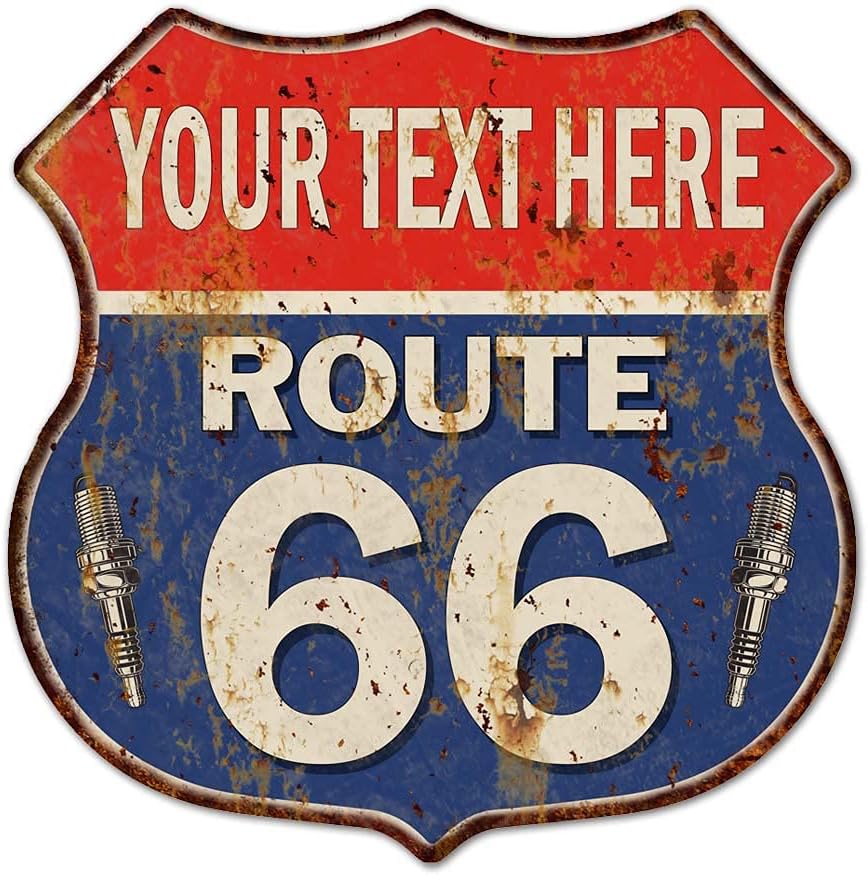
Welcome to Chicago, the Birthplace of Route 66
Chicago, Illinois isn’t just a world-class metropolis—it’s the official starting point of the iconic Route 66. Originally commissioned in 1926, this legendary road begins at the intersection of Adams Street and Michigan Avenue, right in the heart of downtown Chicago. From there, Route 66 travels 2,448 miles southwest all the way to Santa Monica, California.
For travelers, Route 66 starts with a bang in Chicago—a city filled with rich history, stunning architecture, award-winning restaurants, and unforgettable attractions. Whether you’re kicking off your road trip or just looking to soak in some classic Americana, Chicago offers the perfect beginning.
Route 66 History in Chicago
Route 66 was designed to connect the industrial Northeast to the rural Southwest. Chicago was chosen as its northern terminus due to its status as a major railroad and highway hub. The first Route 66 signs went up in Chicago in 1926, and the city’s booming economy helped fuel the road’s early success.
Even today, visitors can find markers and plaques denoting the “Begin Route 66” sign in downtown Chicago—perfect for that bucket list photo-op before heading west.
Where the Journey Begins
When Route 66 was officially commissioned on November 11, 1926, it needed a symbolic starting point—somewhere bold, bustling, and connected to the pulse of America. That city was Chicago, Illinois, where the new highway would begin its 2,448-mile journey westward to Santa Monica, California. More than just a geographic origin, Chicago served as the beating heart of the Mother Road’s cultural, economic, and logistical foundation.
The Origins of Route 66 in Chicago
The concept of Route 66 came out of the Good Roads Movement and the push for improved federal highways in the early 20th century. Cyrus Avery of Tulsa, Oklahoma—often called the “Father of Route 66″—championed a route that would connect Chicago to Los Angeles, promoting commerce and accessibility for rural communities.
Chicago made perfect sense as the eastern terminus. It was a national rail hub, an industrial giant, and the crossroad for Midwestern travelers. Its location on Lake Michigan gave it international reach, while its rail yards, stockyards, and factories made it one of the most economically vital cities in America.
Early Route 66 Alignments Through Chicago
From 1926 onward, Route 66 began at Jackson Boulevard and Michigan Avenue, although this would change slightly in later years. The original route ran west along Jackson Boulevard, turned onto Ogden Avenue, and eventually merged with Joliet Road on its way to the suburbs and beyond.
By the 1950s, as traffic patterns shifted and street configurations evolved, the official starting point moved one block north to Adams Street at Michigan Avenue, which is now commemorated with a popular “Route 66 Begin” sign.
Major streets along the early alignment included:
- Jackson Boulevard (eastbound)
- Adams Street (westbound)
- Ogden Avenue – a critical diagonal roadway that helped Route 66 cut efficiently across the city grid
- South Western Avenue – connecting Ogden to the outer suburbs
These roads carried travelers from the towering skyscrapers of downtown to the sprawling neighborhoods and out into rural Illinois.
The Route 66 Era in Chicago (1920s–1960s)
In the golden age of American road travel, Route 66 transformed Chicago into a gateway city. Thousands of Dust Bowl migrants passed through the city on their way west during the 1930s. Soldiers traveled it during World War II, and postwar vacationers packed up their families to follow the highway into California sunshine.
Along the way, Chicago’s Route 66 corridor became dotted with service stations, motor courts, greasy spoons, neon signs, and bustling garages. Businesses like Lou Mitchell’s Restaurant, which opened in 1923 just steps from the starting point, catered to early motorists and became legendary among travelers.
Though urban sprawl and the creation of expressways (like Interstate 55) would eventually sideline Route 66 in many places, the Chicago segment remained symbolic as the highway’s eastern anchor.
Decommissioning and Preservation
Like much of Route 66, the Chicago stretch was gradually replaced by modern interstates. By 1977, much of the road had been bypassed by I-55, and in 1985, Route 66 was officially decommissioned by the federal government.
However, Chicago’s historic connection to the road has never faded. In the late 1990s and early 2000s, preservationists, tourism boards, and Route 66 enthusiasts worked to mark and celebrate the original route. Today, travelers can walk or drive the early alignment, snapping photos at vintage landmarks and soaking in the spirit of America’s highway history.
Key Historic Sites on Route 66 in Chicago
- “Begin Historic Route 66” Sign (Adams St. & Michigan Ave.)
The symbolic start of Route 66, perfect for photos and orientation. - Lou Mitchell’s Restaurant (565 W. Jackson Blvd.)
A Chicago institution feeding Route 66 travelers since the 1920s. - Union Station (225 S. Canal St.)
A transportation hub during the height of Route 66 travel. - Ogden Avenue
A surviving piece of the original alignment, lined with classic signage and vintage architecture. - Historic Route 66 Markers
Bronze plaques and signs throughout the Loop and South Side mark Route 66’s passage through the city.
Route 66’s Legacy in Chicago Today
Even in the modern cityscape, the soul of Route 66 remains visible. Events like the Chicago Route 66 Classic Car Show, Route 66 road rallies, and local exhibitions at cultural institutions keep the memory alive. Businesses old and new embrace the Route 66 identity, serving as living history museums for curious travelers.
Thanks to preservation efforts, you can follow much of the old route by car, bicycle, or on foot, tracing a path once driven by adventurers, dreamers, and everyman explorers.
Introduction: A Road in Motion
From its debut in 1926 until its decommissioning in 1985, U.S. Route 66 underwent numerous realignments throughout its journey—none more complex than those in Chicago, Illinois, where the highway began. As the city evolved and traffic demands changed, Route 66’s course shifted multiple times, weaving through the downtown core, outlying neighborhoods, and eventually onto high-speed expressways. These realignments tell a fascinating story of urban growth, highway engineering, and American mobility.
The Original 1926 Alignment of Route 66 in Chicago
The first official alignment of Route 66 in Chicago began at Jackson Boulevard and Michigan Avenue, then a bustling corner just across from the Art Institute of Chicago.
Route Overview (1926):
- Jackson Boulevard (westbound): The route initially followed Jackson out of downtown.
- Ogden Avenue: Jackson merged with Ogden Avenue, a diagonal road that allowed a direct route southwest through Chicago’s west side.
- Southwest along Ogden: The highway continued through neighborhoods like Lawndale and North Lawndale.
- Southwest to Joliet Road: From there, it exited the city toward Cicero, Lyons, McCook, and on to Joliet.
This original alignment took advantage of Ogden Avenue’s unusual path—cutting diagonally through the city’s rigid grid system—making it efficient for cross-town and outbound travelers.
The 1933 Realignment (World’s Fair Era)
With the 1933 Chicago World’s Fair (“A Century of Progress”) drawing millions of visitors, city officials and highway planners made slight route modifications to ease congestion and highlight newer roadways.
Key Change:
While the general path remained the same (Jackson > Ogden > Joliet Road), signage and surface upgrades were implemented to accommodate increasing traffic, especially near the lakefront and Loop.
The 1950s Realignment – The Era of One-Way Streets
By the early 1950s, Chicago had introduced a one-way street system in the downtown area. As a result, Route 66 was split into separate inbound and outbound paths:
- Outbound (westbound): Adams Street became the official start of westbound Route 66, replacing Jackson Boulevard. This remains the location of today’s “Begin Historic Route 66” sign at Adams & Michigan.
- Inbound (eastbound): Jackson Boulevard was now one-way eastbound and designated as the inbound return leg of Route 66 into Chicago.
This realignment created the distinctive dual-route Loop configuration still commemorated today.
The 1960s Realignment – Onto the Expressway
By the 1960s, traffic pressures and suburban growth led to more significant changes. Much of Route 66 was rerouted onto new expressways to facilitate faster travel.
Key Shift:
- The route was redirected to Interstate 55 (Stevenson Expressway), bypassing Ogden Avenue and most of the surface streets through the west side.
- This realignment meant that drivers entered the city using I-55, and Route 66 signage appeared alongside modern freeway markers.
Though more efficient, this move distanced travelers from the roadside businesses and cultural landmarks that defined the Route 66 experience.
Overview of Major Alignments Through Chicago
| Time Period | Alignment Start Point | Key Streets/Routes | Notes |
|---|---|---|---|
| 1926–1933 | Jackson & Michigan | Jackson Blvd → Ogden Ave → Joliet Road | Original alignment; used surface streets. |
| 1933–1950s | Jackson & Michigan | Jackson Blvd → Ogden Ave → Joliet Road | Enhanced signage for World’s Fair traffic. |
| 1953–1960s | Adams & Michigan (WB) | Adams St (WB) / Jackson Blvd (EB) → Ogden | One-way split; dual signage in Loop. |
| 1960s–1985 | I-55 Stevenson Expressway | I-55 to suburban exits like IL-171 or IL-53 | Route absorbed into modern expressways. |
Route 66 Legacy Routes in Chicago Today
Although Route 66 has been decommissioned, the various alignments can still be traced:
- Adams Street (westbound): Starting at Michigan Avenue, this is the ceremonial starting point today.
- Jackson Boulevard (eastbound): Considered the original inbound leg.
- Ogden Avenue: Still drivable and dotted with relics like old signage, vintage businesses, and historic bridges.
- Joliet Road (US 66): Once past the city limits, this roadway still carries travelers toward Joliet, closely following original 1926 alignments.
Top Attractions in Chicago Along Route 66
“Begin Route 66” Sign at Adams Street
Location: Adams Street & Michigan Avenue
Arguably the most photographed Route 66 marker, this sign designates the official starting point of the historic highway. Located across from the Art Institute of Chicago, it’s a perfect place to snap a photo and begin your journey on the Mother Road.
📝 Travel Tip: Come early in the morning to avoid crowds and get a clear photo with the sign and skyline in the background.
Historic Jackson Boulevard & Adams Street
Location: Loop District
These streets represent the early alignments of Route 66, where westbound and eastbound travelers entered and exited the city. Adams Street served as the official westbound route starting in the 1950s, while Jackson was the original 1926 alignment and later the inbound return.
🚶 Explore On Foot: Stroll these streets for glimpses of historic facades, bronze plaques, and markers honoring Route 66.
The Art Institute of Chicago
Address: 111 S. Michigan Ave.
Website: https://www.artic.edu/
Located next to the Begin Route 66 sign, this world-class museum isn’t a Route 66 attraction in the traditional sense but offers an artistic backdrop to the starting point. Founded in 1879, it houses pieces by Van Gogh, Hopper, and Grant Wood—artists who defined America’s cultural landscape during Route 66’s heyday.
🎨 Suggested Stop: The “American Gothic” painting—an ode to Midwest values and imagery.
Lou Mitchell’s Restaurant
Address: 565 W. Jackson Blvd.
Website: https://www.loumitchells.com/
A Chicago institution since 1923, Lou Mitchell’s is affectionately called “the first stop on the Mother Road.” Famous for serving fresh donuts, coffee, and breakfast to generations of travelers, the restaurant offers a retro dining experience with a Route 66 legacy.
🍳 Don’t Miss: Homemade marmalade, free Milk Duds for kids, and freshly baked bread.

Union Station
Address: 225 S. Canal St.
Website: https://chicagounionstation.com/

Opened in 1925 after ten years of construction, Union Station served as a key departure point for travelers heading west during Route 66’s golden age. The Beaux-Arts interior remains stunning, and it’s still an active Amtrak terminal—connecting the past and present of American travel.
🏛 Historic Note: This station welcomed millions of passengers during WWII and the peak of cross-country road and rail travel.

Grant Park
Location: Downtown lakefront, east of Michigan Avenue
Spanning 319 acres along Lake Michigan, Grant Park was a welcoming green space for early Route 66 travelers arriving or departing from the city. It features gardens, sculptures, and Buckingham Fountain, which was dedicated in 1927—just one year after Route 66 was commissioned.
🌳 Fun Fact: Known as “Chicago’s front yard,” this park often served as a visual introduction to visitors beginning their road trip.
The Berghoff Restaurant
Address: 17 W. Adams St.
Website: https://www.theberghoff.com/
Operating since 1898, The Berghoff is one of Chicago’s oldest restaurants and sits along the westbound Route 66 alignment. Known for German-American fare and its historic bar (which reopened after Prohibition), it embodies the kind of authentic culinary experience travelers sought along Route 66.
🍺 Try This: The Reuben sandwich and house-brewed root beer.
Ogden Avenue (Historic Route 66 Alignment)
Location: Begins near Union Park & continues southwest
Ogden Avenue is one of the few surviving thoroughfares that closely follows the original 1926 alignment of Route 66 through Chicago. As a diagonal road cutting across the city grid, it offered efficient westward travel before expressways took over.
🚗 What to See: Vintage auto shops, faded signage, and small commercial buildings that hint at their Route 66 past.
Dell Rhea’s Chicken Basket (Just Outside Chicago)
Address: 645 Joliet Rd., Willowbrook, IL
About 25 miles southwest of downtown, this legendary diner sits on Joliet Road, a continuation of Route 66. Established in the 1940s, it served countless travelers with classic fried chicken and sides, all in a classic roadhouse setting.
🐔 Perfect Stop: For those continuing their journey out of the city, this is a quintessential Route 66 lunch stop.
Other Top Attractions & things to do in Chicago
Chicago Architecture Center
Address: 111 E. Wacker Dr.
Although not a Route 66-specific site, the Chicago Architecture Center offers deep insight into the urban landscape through which Route 66 was born. Exhibits focus on the evolution of roadways, railways, and skyscrapers—key elements in Route 66’s development.
🏙 Tip: Book a walking or boat tour to see how the city’s design influenced the country’s highway system.
Navy Pier
Location:
While not technically on Route 66, Navy Pier is a must-see Chicago icon, especially for travelers staying in the city before starting the journey.
Willis Tower Skydeck
Location:
Formerly the Sears Tower, the Skydeck offers panoramic views of Chicago and beyond—including the direction Route 66 heads.
Take a Hop on Hop Off Bus Tour
We took a city tour on a double decker open top Hop on Hop Off Bus Tour. It was a great way to get a good overall view of the city, the main attractions in the city, and some of the history.
Take a Boat Tour up the Chicago River and Into Lake Michigan
We really enjoyed the evening architectural tour by boat…
Where to Stay in Chicago Near Route 66
The Palmer House Hilton
An elegant, historic hotel just steps from the Route 66 starting point. Lavish décor, central location, and classic Chicago charm.
Chicago Athletic Association Hotel
A former athletic club turned boutique hotel, with rooftop views of Millennium Park and a speakeasy-style vibe.
HI Chicago Hostel
Budget-friendly and located just a few blocks from the beginning of Route 66—perfect for backpackers and solo travelers.
Where to Eat in Chicago Before You Hit the Road
Lou Mitchell’s
A Route 66 institution known for massive portions, coffee refills, and a pre-road-trip breakfast you won’t forget.
Giordano’s or Lou Malnati’s
You can’t leave Chicago without deep-dish pizza. Giordano’s is known for its stuffed style, while Malnati’s delivers buttery, cheesy heaven in a pan.
Portillo’s
A fast-casual stop for Chicago-style hot dogs, Italian beef sandwiches, and decadent chocolate cake. Perfect for a quick but iconic bite.
Do-Rite Donuts
Artisanal donuts made fresh daily, with vegan and gluten-free options. Grab one (or a dozen) before you roll down Route 66.
Tips for Starting Your Route 66 Adventure in Chicago
- Best Time to Visit: May through October for optimal weather and events
- Parking: Downtown parking is expensive—consider staying nearby and walking or using public transit
- What to Bring: Route 66 guidebook, camera, walking shoes, and a big appetite
Final Thoughts: Let the Road Trip Begin!
There’s no better place to begin your Route 66 adventure than in Chicago, Illinois. With its big-city energy, deep roots in American culture, and direct ties to the highway’s birth, Chicago is the perfect launchpad for your journey along the Mother Road.
From mouthwatering food to famous landmarks, this city sets the tone for everything Route 66 stands for—freedom, adventure, and a little slice of American history.
So fill your tank, grab your camera, and start your engines—Route 66 starts here.













